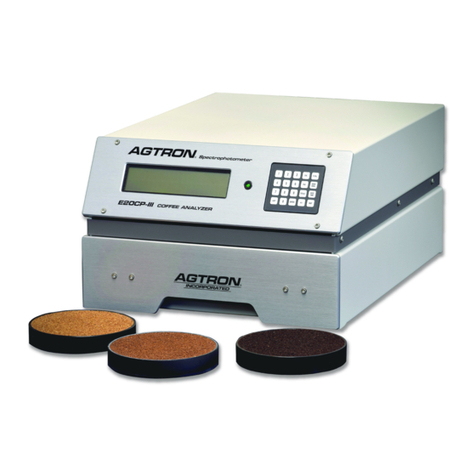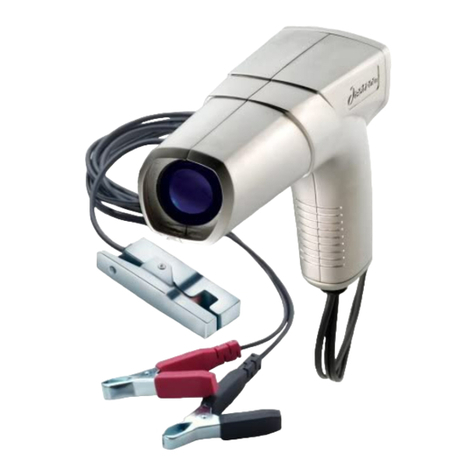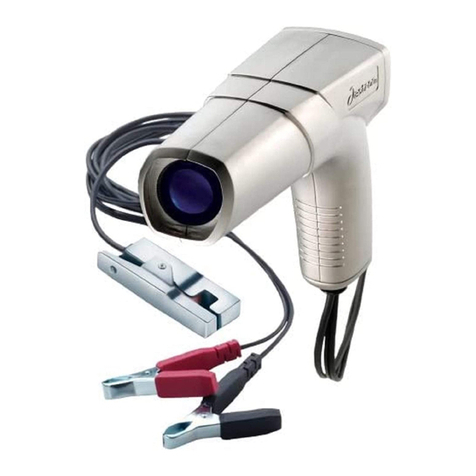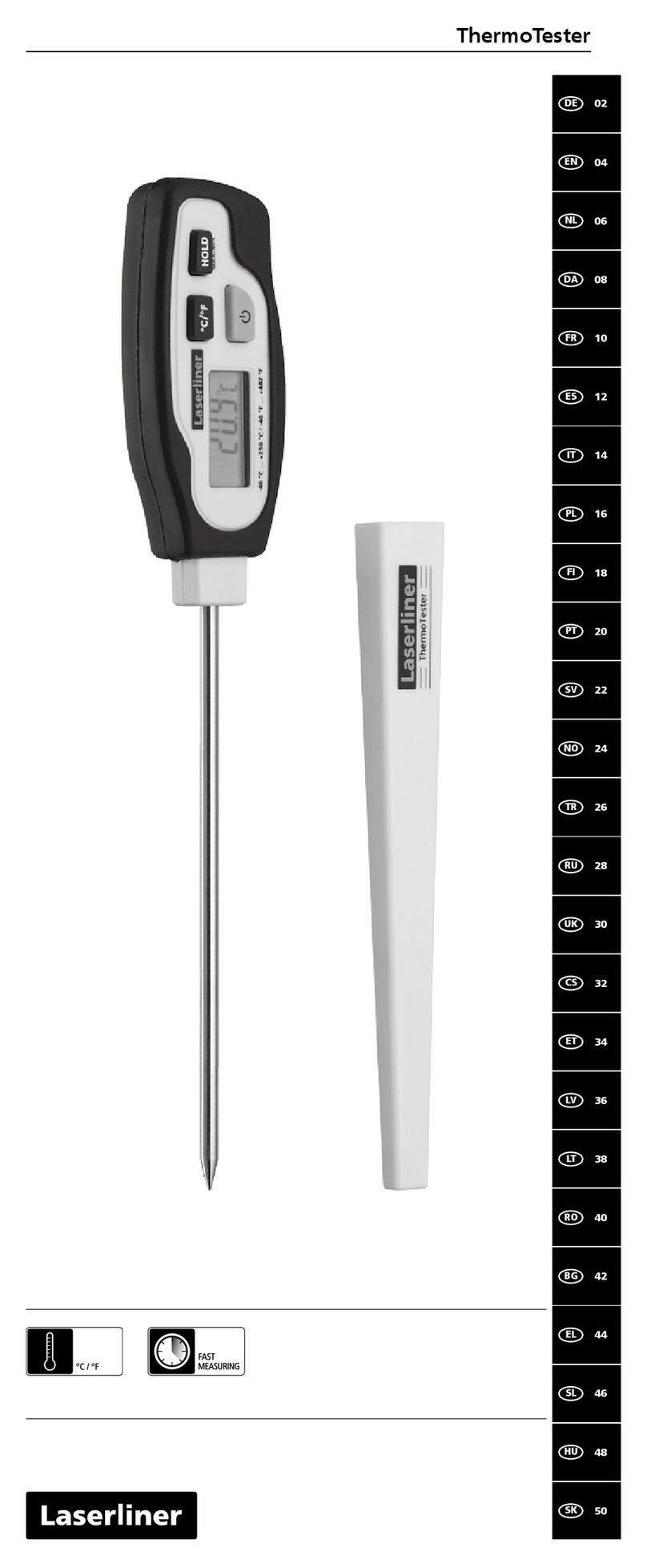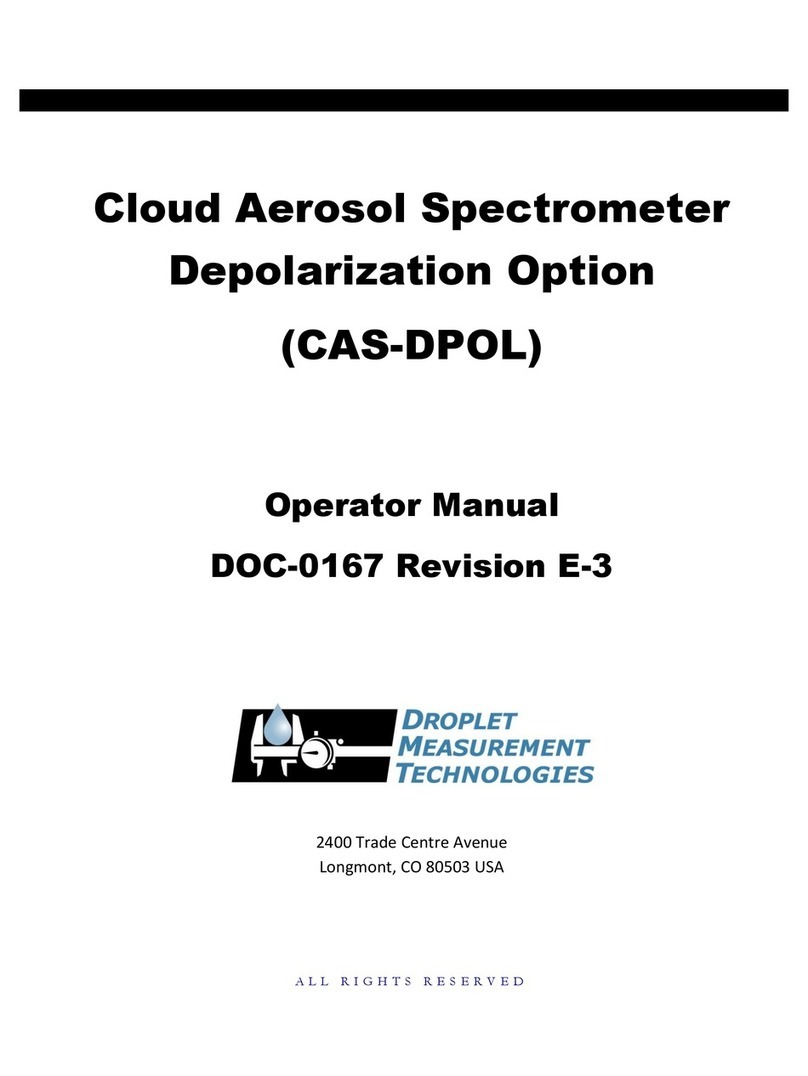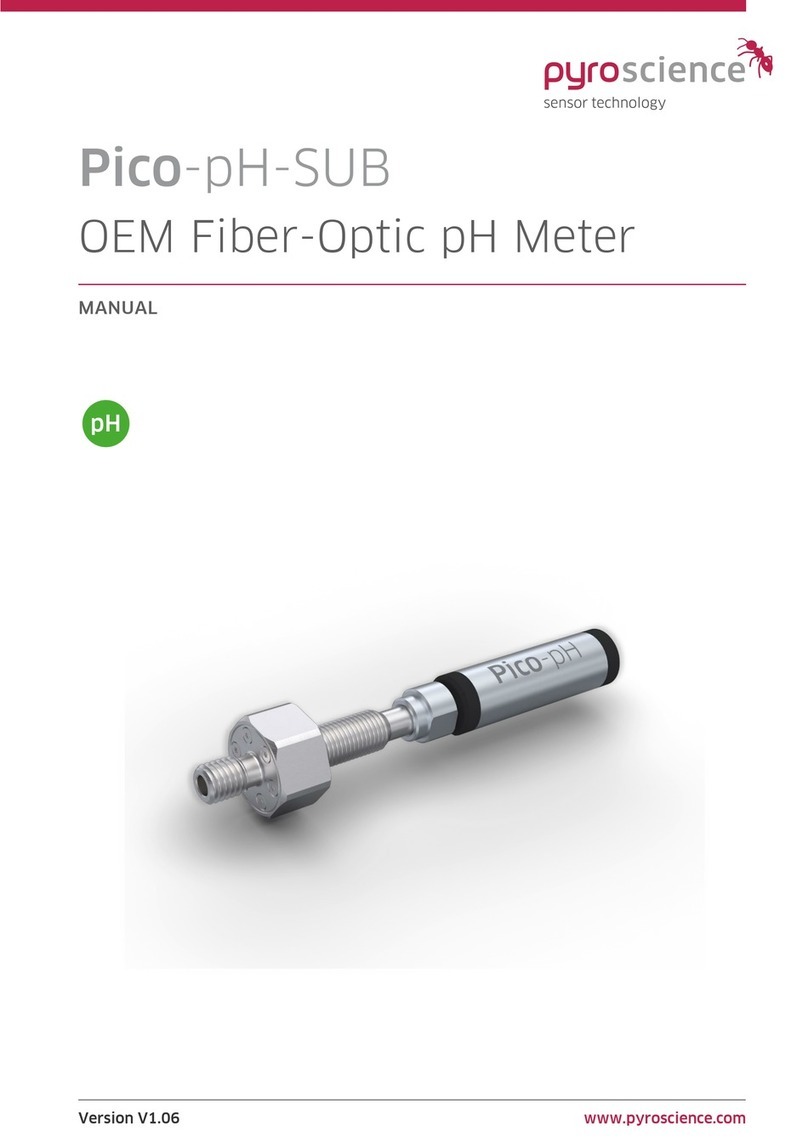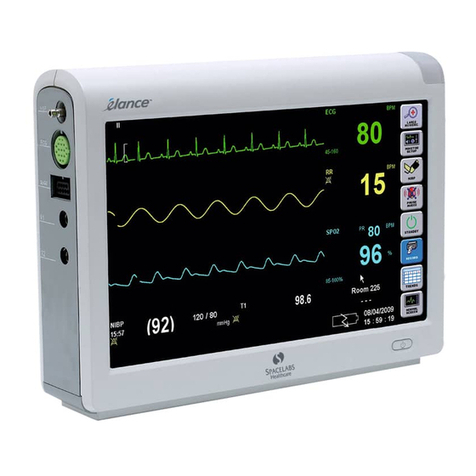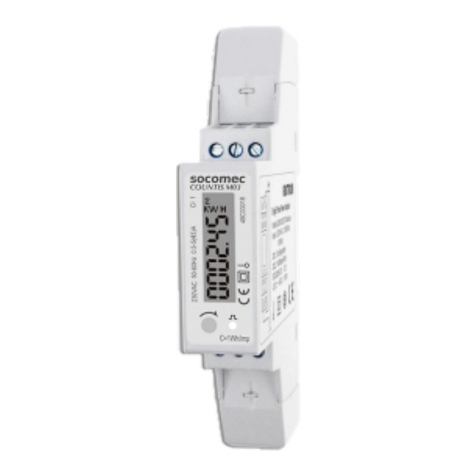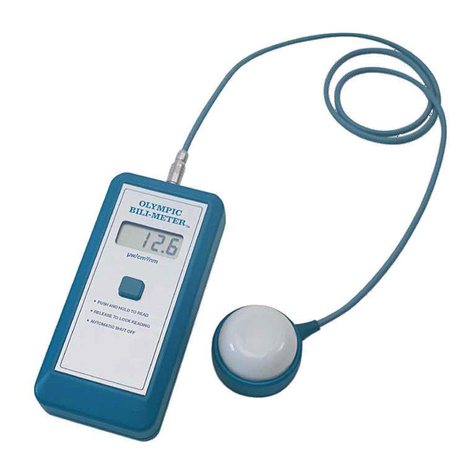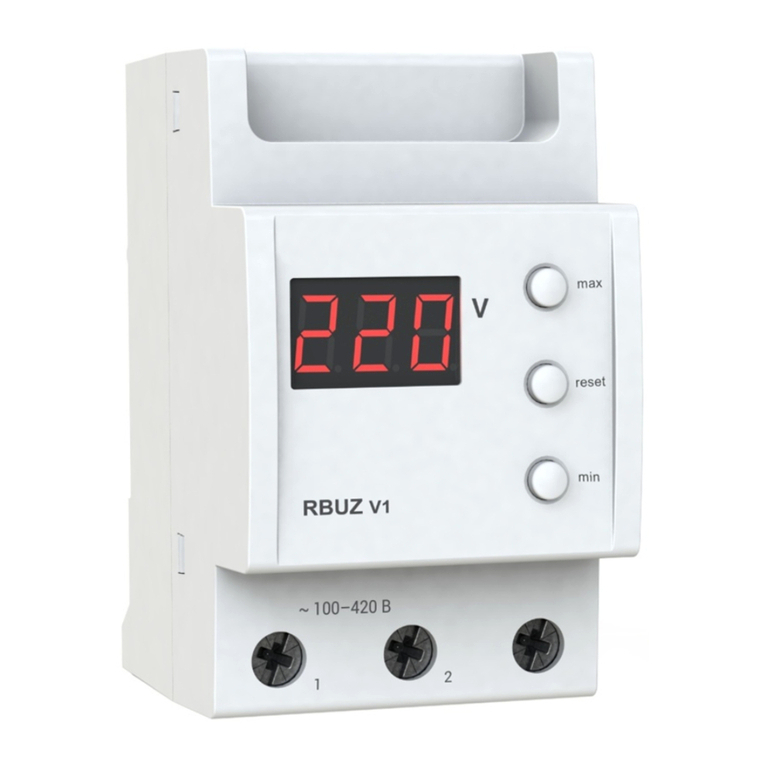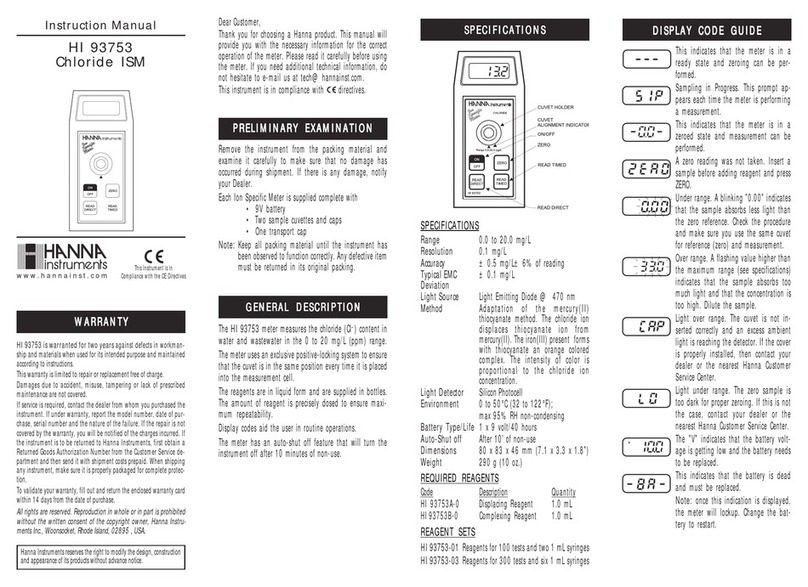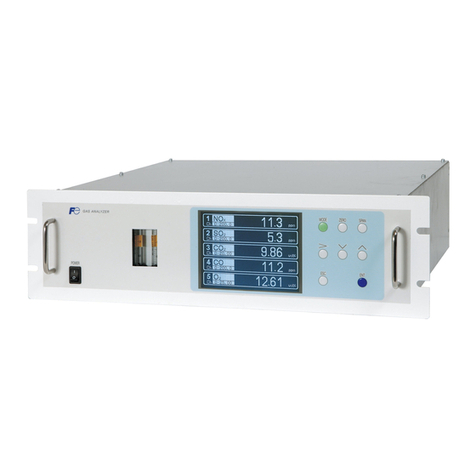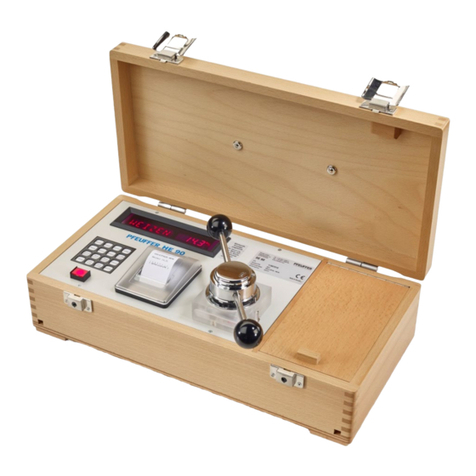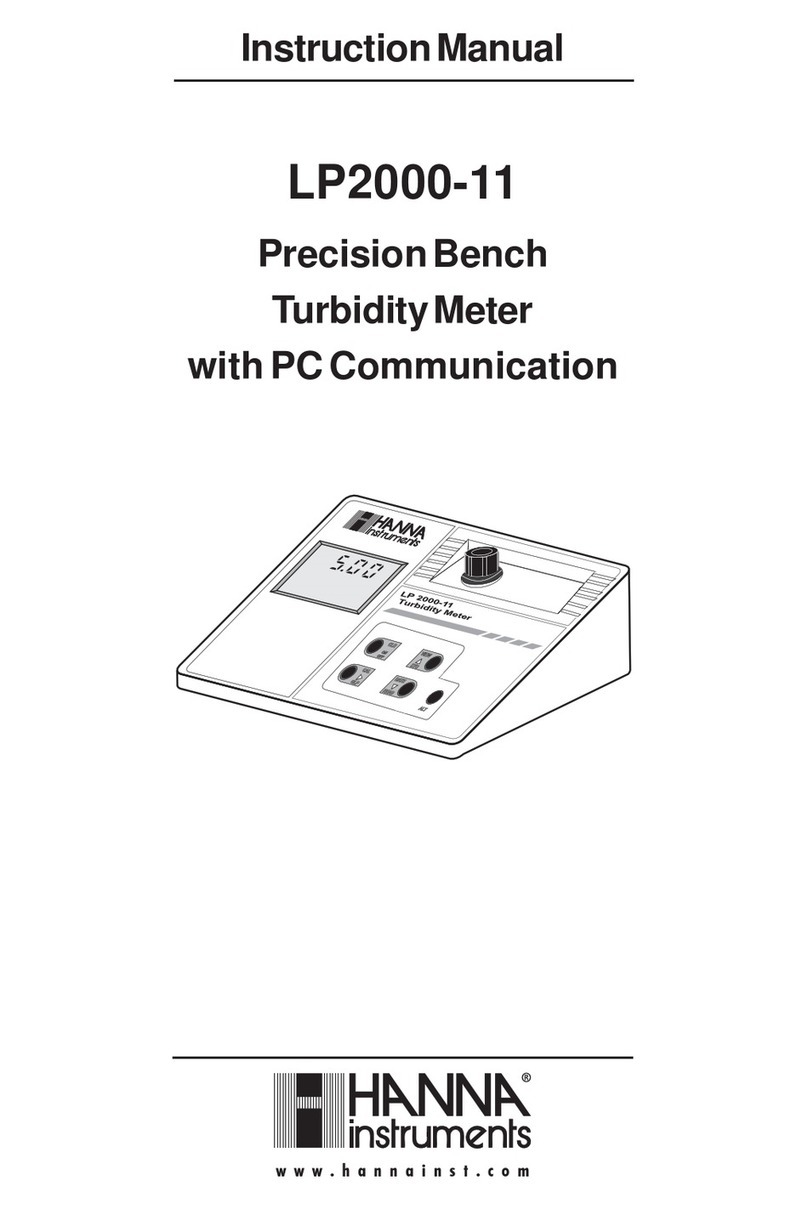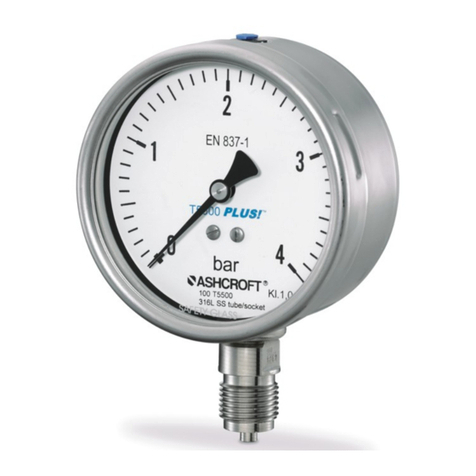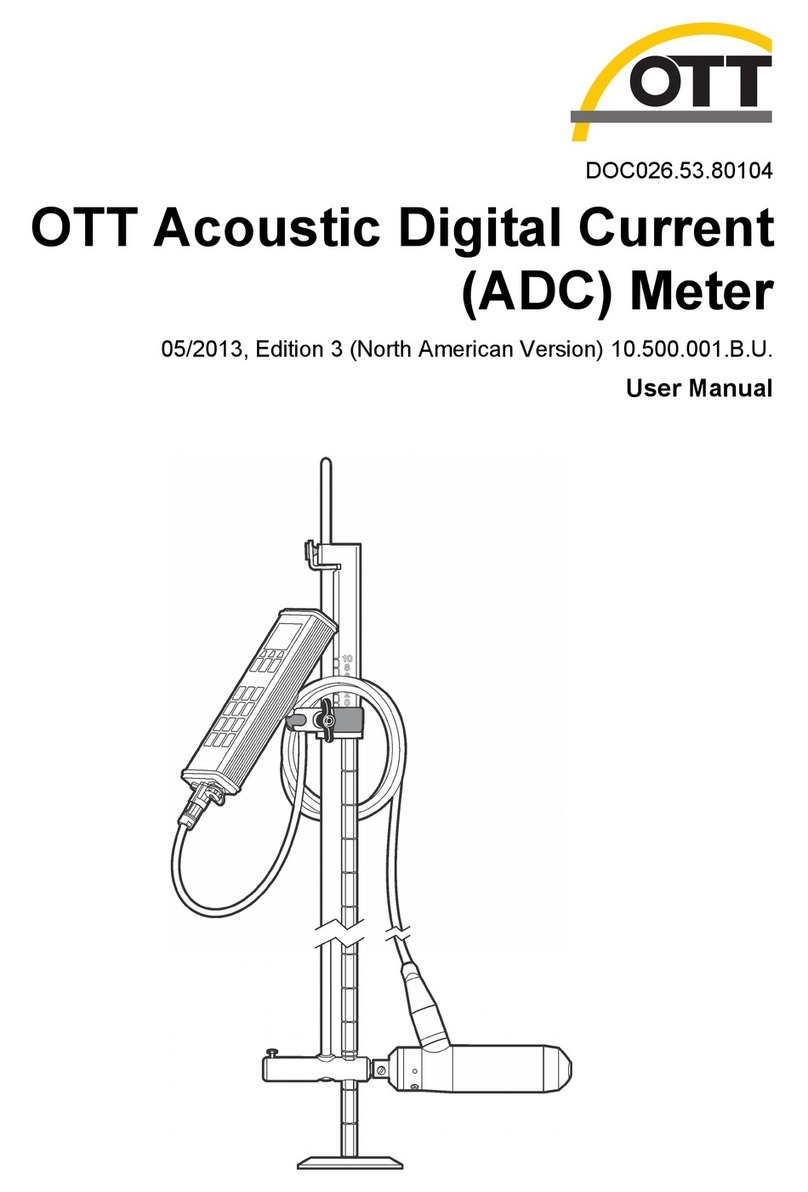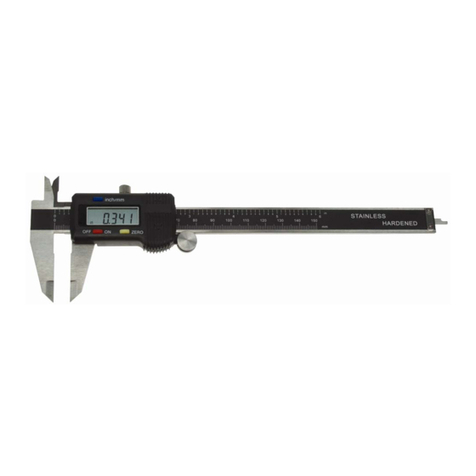Actron 615 User manual

owners
manual
ENGINE
ANALYZER
MODEL
615
FOR
12
VOLT
IGNITION
SYSTEMS
IMPORTANT
The
information
in
this
manual
will
serve
asa
general
guide
for
engine
tune-up
and
charging
system
tests
and
adjustments.
CONSULT
THE
OWNERS
MANUAL
OF
THE
VEHICLE
BEING
TESTED
FOR.
SPECIFIC
TUNE-UP
INFORMATION
AND
TEST
PROCEDURES.
THE
MANUFACTURER'S
SPECIFICATIONS
AND
TEST
PROCEDURE
FOR
ADJUSTING
DWELL
ANGLE,
IDLE
SPEED
AND
CHARGING
SYSTEM
OUTPUT.
SHOULD.
BE
FOLLOWED.
FOR
SAFE
OPERATION
Be
careful
when
testing
an
operating
engine
-~
stay
away
from
the fan
blades,
drive
belts,
high
voltage
spark
plug
wires
and
hot
exhaust
manifold.
Operate
the
vehicle
in
a
well
ventilated
area
to
avoid
danger
of
carbon
monoxide
poisoning.
actranZ/
9801
WALFORD
AVE.
MANUFACTURING
CO.
CLEVELAND,
OHIO
44102
PRINTED
iN
U.S.A.
2-1412A

CONNECTIONS
FOR
RPM,
DWELL,
VOLT
AND
POINTS
TESTS
À
SLIDE
SWITCH
KNOB
TO
"OTHER
TESTS"
POSITION
FUNCTION
SELECTOR
KNOB
ZERO
ADJUSTER.
Before
the
con-
nections
are
made,
if
the
pointer
is
not
on
zero,
rotate
adjuster
slowly
with
a
screwdriver
until
pointer
is
on
zero.
AMPS
SHUNT
Not
used
for
these
tests
-
See
page
ó
for
amp
fest
con~
nections.
1.
Connect
the
RED
clip
to
the
battery
Positive
(+)
terminal.
2.
Connect
the
BLACK
clip
to
the
bat-
tery
Negative
(-)
terminal.
3.
Connect
the
GREEN
clip
to
the
dis-
tributor
connection
on
the
ignition
coil.
For
connections
to
Ford
cars,
Delco
High
Energy
ignition,
Ford
transistor
r
ignition
and
Chrysler
transistor
FIGURE
1
ignition,
see
Figs.
2,
3,
4,
5
and
ó.
COIL
DISTRIBUTOR
TACHOMETER
CONNECTION
TO
GENERAL
MOTORS
CARS
WITH
DIAGNOSTIC
CONNECTOR
AND
DELCO
HEI
TACHOMETER
CONNECTIONS
FOR
GENERAL
MOTORS
CARS
WITH
DIAGNOSTIC
CONNECTORS
To
make
R
P
Mtests,
locate
the
Engine
Elec-
-ical
Diagnosis
Connector
(usually
near
the
aft
front
fender)
open
the
cover
and
insert
a
„pade
terminal
in
socket
No.
6.
DELCO
HIGH
ENERGY
IGNITION
4
CYL.
AND
IN-LINE
6
CYL.
HEI
V
~
8
ENGINE
HEI
Connect
the
GREEN
clip
to
the
spade
terminal.
The
RED
clip
must
be
connected
to
battery
POS.
(+)
and
the
BLACK
clip
to
battery
NEG.
(-).
CONNECT
GREEN
CLIP
TO
THIS
TERMINAL
On
4
cylinder
and
in-line
6
cylinder
engines
with
a
seporate
coil,
connect
the
GREEN
clip
to
the
open
TACH
ter-
minal
as
indiceted.
On
the
integral
coil
V-8
HEI,
slide
the
adopter
onto
the
TACH
terminal
os
shown.
Then
connect
the
GREEN
clip
to
the
i
adapter.
The
RED
and
BLACK
clips
oare-
9°
connected
to
the
battery
Positive
and
f
CLIP
Negative
os
shown
in
FIGURE
1
5N.
oe
Le
A
tm
TO
IGNITION
fit
\suiren
HEt
ADAPTER
INCLUDED
FIGURE
De
FIGURE
3.

TACHOMETER
CONNECTION
TO
FORD
AND
CHRYSLER
TRANSISTOR
IGNITION
SYSTEMS
AND
LATE
MODEL
FORD
STANDARD
IGNITION
FORD
IGNITION
CHRYSLER
IGNITION
i
On
1974
Ford
transistor
ignition,
use
the
Ford
adapter
as
shown
in
FIGURE
6.
TOLIGN.
4
TÒ
oiTa
Swit
us
J
iz
SEG
na
ADAPTE
R
fae
w
S
rf
Connect
the
GREEN
lead
fo
the
negative
ter-
minal
of
the
ignition
coil.
Connect
the
RED
and
BLACK
clips
to
the
battery
Positive
and
Negative
as
shown
in
FIGURE
1.
On
1975
and
later
Ford
transistor
ignition,
connect
the
GREEN
clip
to
the
wire
terminal
on
the
DEC
side
of
the
coil
as
shown
below.
Connect
the
RED
and
BLACK
clips
to
the
bat-
tery
Positive
and
a
as
shown
in
FIGURE
1.
TO
DUAL
BALLAST
GREEN
ti
a
On
Ford
cars,
lift
the
dis-
tributor
terminal
and
slide
the
Ford
Adapter
clip
in
place
as
shown,
then
push
the
terminal
down
on
it,
Remove
when
the
tests
ore
finished,
FIGURE
6
ict
gt
j
a
8
f
Z4
CONTROL
UNIT
;
i
-
k
FIGURE
5
FE:
FIGURE
4
POINT
RESISTANCE
TEST-CONVENTIONAL
IGNITION
SYSTEMS
ONLY
During
engine
tune-up,
this
test
should
be
per~
5.
TEST
RESULTS
formed
first.
1,
The
engine
must
be
OFF.
The
test
leads
must
be
connected
as
shown
in
FIG.
1.
2.
Set
the
slide
switch
knob
to
OTHER
TESTS
and
the
Function
Selector
Knob
to
POINTS.
NOTE:
Remove
the
distributor
cap and
inspect
the
contact
points.
If
sifted,
they
sould
be
keliai,
Points
are
O.K.
Turn
the
ignition
key
Normal
used
contact
points
are
OFF.
Proceed
to
next
TEST.
light
gray
in
color.
If
the
con-
tact
points
pass
the
visual
in-
spection,
proceed
as
follows:
3.
Replace
the
distributor
cap
and
REMOVE
THE
HIGH
TENSION
LEAD
FROM
THE
CENTER
OF
THE
DISTRIBUTOR
CAP
AND
GROUND
IT
BY
PLACING
THE
LOOSE
END
SO
IT
TOUCHES
THE
ENGINE
OR
FRAME,
NOTE:
When
testing
a
vehicle
with
dual
points,
alternately
block
one
set
of
points
open
with
a
piece
of
in-
A
f
g
i
7
sulating
material
while
the
other
The
points
may
be
defective
or
the
following
set
is
being
tested.
faults
may
exist:
Poor
distributor
ground.
4,
TURN
THE
IGNITION
KEY
ON.
If
the
Poor
connection
on
the
primary
meter
reads
near
full
scale
right,
the
points
are
open.
Crank
the
engine
with
the
igni-
tion
key
or
an
external
starting
switch
a
fraction
of
a
revolution
at
a
time
until
the
meter
reads
in
the
left
hand
area
of
the
scale.
The
points
are
now
closed.
lead
from
the
distributor
to
the
ignition
coil.
Defective
distributor
lead,
Misaligned
points.
Correct
the
defect,
and
repeat
the
test,

NOTE:
This
test
and
adjustment
is
performed
on
cars
with
conventional
ignition
systems
and
breaker~point
transistor
ignition
systems..
It
is
not
used
on
cars
equipped
with
electronic
igni-
tion
systems
that
do
not
have
breaker
pointsa
Check
the
owners
manual
or
engine
compartment
decal.
Follow
instructions
regarding
vacuum
line
or
advance-
retard
solenoid
connections.
Vacuum
line
must
be
discon-
nected
from
distributor.
at
D
OF
VACUUM
LINE
Connect
the
tester
as
shown
in
FIGURE
1
or
6.
Set
the
slide
switch
knob
fo
OTHER
TESTS
and
the
Function
Selector
Knob
to
DWELL.
Operate
the
engine
at
idling
speed
and
observe
the
Dwell
reading
on
the
scale
that
corresponds
to
the
number
of
cylinders
in
the
engine
being
tested,
If
the
dwell
reading
is
higher
or
tower
than
the
manufacturer's
specification:
1.
On
Delco-Remy
distributors
with
a
sliding
metal
window
in
the
cap:
A.
Operate
the
engine
at
idle
RPM.
SLOTTED
HQLE
POINTS-DWELL
TEST
AND
ADJUSTMENT
B.
Raise
the
metal
window
and
turn
the
point
adjusting
screw
with
an
1/8"
Allen
wrench
until
the
dwell
reading
is
the
same
as
specified
by
the
manufacturer.
(FIGURE
7
)
On
engines
that
have
non-window
type
distri-
butors,
adjust
dwell
as
follows:
1.
Remove
coil
wire
from
center
tower
of
dis-
tributor
cap
and
ground
the
wire
by
p'acing
the
loose
end
so
it
touches
the
engine
or
frame.
2.
Remove
the
distributor
cap
and
rotor.
3.
Connect
a
remote
starter
switch
to
test
vehicle
or
have
an
assistant
crank
the
engine
for
you.
4,
With
ignition
switch
on
and
engine
cranking,
observe
reading
on
the
Dwell
scale.
5.
To
adjust
dwell,
loosen
the
locking
screw
(s)
slightly
and
adjust
the
point
gap
according
to
the
procedure
outlined
in
the
vehicle's
service
manual.
There
are
a
number
of
mechanical
methods
for
adjusting
breaker
points.
Two
typical
methods
are
shown
in
FIGURE
8,
Tighten
locking
screw,
and
recheck
dwell
while
crank~
ing
engine.
Repeat
procedure
if
necessary.
6.
Reassemble
distributor
and
recheck
dwell
read-
ing
with
engine
operating
at
idle
speed.
Repeat
4
and
5
if
necessary.
ADJUSTMENT
ADJUSTMENT
LOCKING
SCREW
TYPICAL
DISTRIBUTOR
BREAKER
POINT
CONSTRUCTION
de
ae
bab
aha
taattian
timina
avaru
tima
the
nainte
nre
adtusted.

DWELL
VARIATION
TEST
Check
the
owners
manual
or
engine
compartment
decal.
Follow
instructions
regarding
vacuum
line
`
or
advance-retard
solenoid
connections.
Vacuum
line
must
be
disconnected
from
distributor.
Increase
the
engine
speed
from
idle
to
a
minimum
of
1500
RPM
and
then
reduce.
it
back
to
idle.
Watch
the
dwell
reading
during
this
procedure.
If
the
dwell
variation
is
more
than
3
degrees,
check
for
wear
in
the
breaker
plate
or
wear
in
the
distri-
butor
shaft
or
bushings.
IDLING
SPEED
AND
CARBURETOR
ADJUSTMENT
SOLID
STATE
4
Connect
the
test
leads
as
shown
in
FIGURE
1.
Set
the
slide
switch
knob
to
OTHER
TESTS
and
the
Function
Selector
Knob
to
the
RPM
position
that
corresponds
to
the
number
of
cylinders
in
the
engine
being
tested.
Observe
the
test
readings
on
the
RPM
x
100
scale.
The
engine
should
be
at
normal
operating
temper-
ature
for
this
test.
Many
cars
built
in
1970
and
later
have
idle
mixture
screw
limiter
caps
that
restrict
adjustment.
On
these
cars
the
carburetor
should
be
adjusted
according
to
the
procedure
in
the
manufacturer's
service
manual,
Start
the
engine
and
turn
the
idle
speed
screw
until
specified
idling
speed
is
indicated.
NOTE:
On
engines
equipped
with
exhaust
emission
control
systems,
air
injection
pumps
and
positive
crankcase
ventila-
tion,
refer
to
the
decal
in
the
engine
compartment
or
the
owners
manual
for
idle
adjust-
TAERA
es
ag
ment
specifications.
IDLE
SPEED
SCREW
M
PLUG
END
OF
VACUUM
LINE
MADE:
IN
U.S.A:
14
(See
owners
manual).
On
engines
without
exhaust
emmission
contro!
sys~
tems,
turn
the
idle
mixture
screw
in
(lean)
until
the
idling
speed
starts
to
decrease,
then
turn
it
back
out
(rich)
just
until
the
idling
speed
reaches
a
maximum.
Further
richening
past
this
point
will
only
waste
fuel.
This
should
be
done
slowly
to
al-
low
engine
speed
to
stabilize.
NOTE:
On
multi~barrel
carburetors,
repeat
this
procedure
on
each
idle
mixture
screw
until
the
highest
idling
speed
and
smoothest
operation
is
obtained.
If
the
engine
idle
speed
is
now
higher
than
the
manufacturer's
specification,
turn
the
throttle
idling
adjustment
screw
until
the
speci-
fied
idling
speed
is
indicated
and
readjust
the
mixture
screws
with
the
above
procedure.
TYPICAL
CARBURETORS
IDLE
MIXTURE
SCREWS
IDLE
SPEED
SCREW

The
VOLTS
position
is
used
to
test
the
cranking
and
charging
systems
in
the
vehicle.
CONSULT
THE
OPERATING.
MANUAL
OF
THE
VEHICLE
BEING
TESTED
FOR
SPECIFIC
VOLTAGES
AND
TEST
PROCEDURES:
The
following
information
will
serve
as
a
general
guide
for
making
charging
system
tests.
Before
making
VOLTS
tests:
Check
the
fan
belt--it
should
be
tensioned
according
to
the
manufacturer's
specifications.
Check
the
generator
or
alternator
pulley
and
mounting
bolts.
They
should
be
tight.
CRANKING
VOLTS
TEST
l.
Remove
the
high
tension
lead
from
the
center
of
the
distributor
cap
and
ground
it
by
placing
the
loose
end
so
it
touches
the
engine
or
frame.
2.
Connect
the
test
leads
as
shown
in
Fig.
1.
Set
the
slide
switch
knob
to
OTHER
TESTS
and
the
Function
Selector
Knob
to
VOLTS.
3.
Operate
the
starter
for
10
seconds
and
ob-
serve
the
cranking
voltage
on
the
0-16
Volts
scale,
A
steady
reading
of
more
than
9.6
volts
indicates
that
the
battery,
cables,
and
starter
system
are
in
good
condition.
CHARGING
SYSTEM
VOLTS
TEST
1.
Connect
the
test
leads
as
shown
in
Fig.
1.
Set
the
slide
switch
knob
to
OTHER
TESTS
and
the
Function
Selector
Knob
to
VOLTS.
Start
the
engine.
Allow
it
to
run
a
few
minutes
at
1500
to
2000
RPM.
Observe
the
reading
on
the
0
-
16
volt
scale.
The
pointer
should
be
between
13.8
and
5
15.2
volts
with
or
without
headlights
and
Make
sure
that
the
charging
system
wiring
and
the
battery
cables
are
in
good
condition
and
that
connections
are
tight.
Make
sure
the
battery
is
clean
and
that
the
liquid
level
in
each
cell
is
above
the
plates.
The
engine
and
all
parts
of
the
charging
system
should
be
at
normal
operating
temperature
be-
fore
making
any
electrical
tests.
If
the
engine
is
cold,
operate
the
engine
at
idle
speed
for
at
least
15
minutes
before
making
any
tests.
_
RRL
TAP
TOT
EPPO
IS
ESN
TI
IN
TL
BI
ONS
IISA
NEON
IO
I
MNES
RS
TE
NEAR
4.
A
reading
below
9.6
volts
could
be
caused
by
a
battery
that
is
defective
or
not
fully
charged.
Fully
charge
the
battery
and
repeat
the
test.
If
the
reading
is
still
below
9.6
volts,
either
the
battery
or
starter
is
defective.
5.
A
fluctuating
voltage
reading
is
indicative
of
adefect
in
the
starter
or
battery
or
in
the
battery-starter
wiring
circuit.
Refer
to
page
7
(POINTS-LOW
VOLTAGE
SCALE)
for
trouble
shooting
voltage
drops
in
the
battery~starter
wiring
circuit.
Replace
or
repair
any
defective
parts
as
required
to
restore
cranking
system
to
proper
operation.
6.
Replace
the
high
tension
lead
in
the
center
of
the
distributor
cap.
RTE
ESE
ESE
PTR
TE
CENT
ETE.
PE
POR
EE
PE
EEEE
I
PDS
NT
NT
IS
TEE,
blower
motor
on.
Readings
lower
than
13.8
indicate
either
a
worn
out
battery,
defective
generator
or
alternator,
defec-
tive
or
improperly
adjusted
voltage
regu~
lator.
Readings
above
15.2
are
indicative
of
a
defective
or
improperly
adjusted
voltage
regulator.
Replace,
repair
or
adjust
the
defective
part
as
required.

AMPS
TEST
(ALTERNATOR
OUTPUT)
SLIDE
SWITCH
KNOB
TO
"AMPS"
POSITION
The
alternator
output
should
be
checked
if
the
volt-
age
reading
was
below
13.8
in
the
CHARGING
SYSTEM
TEST
on
page
5,
or
if
the
battery
requires
frequent
charging
with
a
portable
charger.
Set
the
slide
switch
knob
to
AMPS.
The
Function
Selector
Knob
can
be
at
any
position.
Observe
the
test
reading
on
the
0-160
AMPS
scale.
1.
Consult
the
vehicle
service
manual
for
the
correct
method
of
disconnecting
the
regulator
in
order
to
check
the
alternator
output
without
the
regulator
in
the
circuit.
When
the
regulator
is
—
disconnected,
the
circuit
must
be
bypassed
in
order
to
observe
alternator
output.
Consult
the
vehicle
service
manual
for
correct
method
of
bypassing
the
regulator
circuit.
2.
Remove
the
Negative
cable
connection
on
the
battery.
This
will
eliminate
the
danger
of
shorting
the
battery
with
the
tool
used
to
perform
Step
3.
3.
Consult
the
service
manual
for
the
vehicle
being
tested
for
the
location
of
the
alternator
output
terminal
and
remove
the
cable
from
the
output
terminal.
Connect
the
shunt
between
REVERSE
CONNECTIONS
IF
METER
READS
BACKWARDS
N
SNe
y
Ñ
;
\
:
ar
ca
\
ALTERNATOR
OUTPUT
\\
CABLE
NN
the
cable
and
terminal
as
shown.
Be
sure
these
connections
are
tight.
The
slotted
side
of
the
shunt
should
be
connected
to
the
Positive
terminal
on
the
alternator.
Reconnect
the
Negative
cable
to
the
battery.
4.
Turn
off
all
lights
and
accessories.
Start
the
engine
and
rev
it
to
about
2000
RPM.
If
the
read-
ing
observed
on
the
0-160
AMP
scale
corresponds
to
the
alternator
output
specified
in
the
vehicle
service
manual,
the
alternator
is
O.K.
and
the
trouble,
if
any,
is
in
the
regulator.
5.
If
the
output
is
below
rating,
check
for
loose
fan
belt,
defect
in
the
alternator
windings
or
diodes
or
higher
than
normal
resistance
in
the
cables
or
connections
in
the
charging
circuit,
6.
Asa
safety
precaution,
remove
the
battery
Negative
cable
before
you
remove
the
shunt.
Attach
the
alternator
output
cable
to
the
output
terminal
and
then
re-connect
the
battery
Nega-
tive
cable.
6

POINTS-
LOW
VOLTAGE
SCALE
The
POINTS
scale
is
also
a
0-1.0
volt
scale.
This
scale-is
useful
for
checking
voltage
drops
in
the
vehicle's
electrical
system.
SOLENOID
CONNECTION
STARTER
CONNECTION
ee
BATTERY
CONNECTICN
Set the
slide
switch
knob
to
OTHER
TESTS
and
the
Function
Selector
Knob
to
POINTS.
Use
the
GREEN
and
BLACK
clips
for
these
tests.
The
RED
clip
is
not
used.
Corroded
or
loose
connections
and
frayed
or
bro-
ken
cables
can
cause
excessive
voltage
drops
in
the
starting
circuit
which
can
cause
hard
starting.
To
test
for
these
conditions,
connect
the
clips
be-
tween
I
and
2,
2
and
3,
4
and
5,
5
and
6,
6
and
7,
7
and
8
with
the
starter
turning.
During
this
test,
no
reading
should
be
higher
than
.1
volt.
If
a
reading
higher
than
.1
volt
is
observed
during
any
of
these
tests,
check
the
cable
or
connections
involved,
clean
and
tighten
the
connections
and
replace
the
cables
or
solenoid
when
necessary.
If
the
meter
reads
to
the
left
of
zero
during
any
of
the
above
tests,
reverse
the
position
of
the
clips.
Table of contents
Other Actron Measuring Instrument manuals
